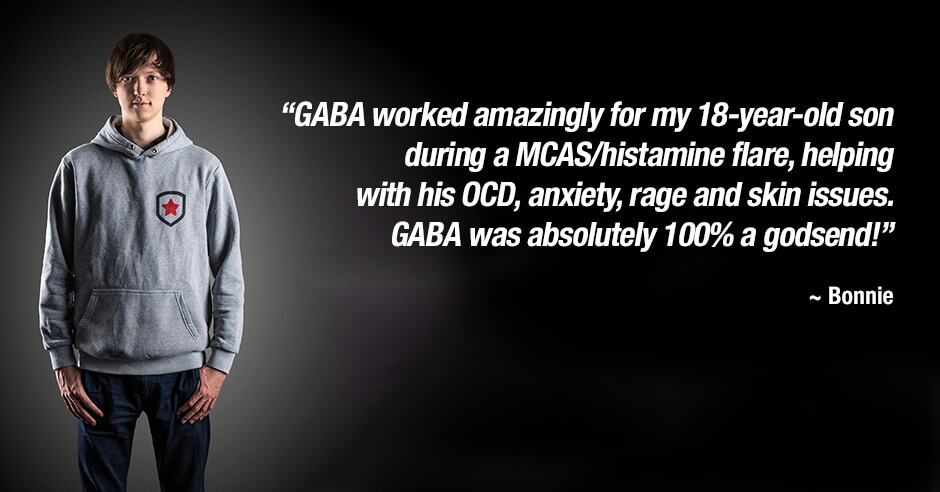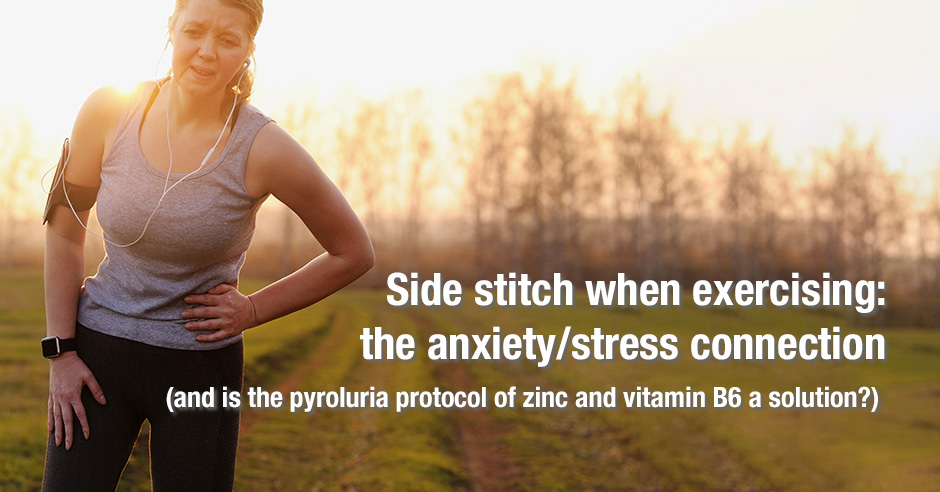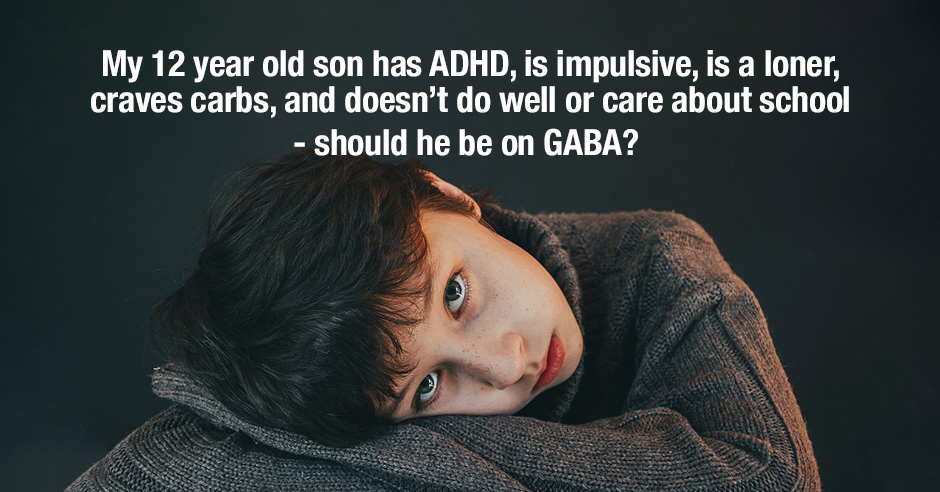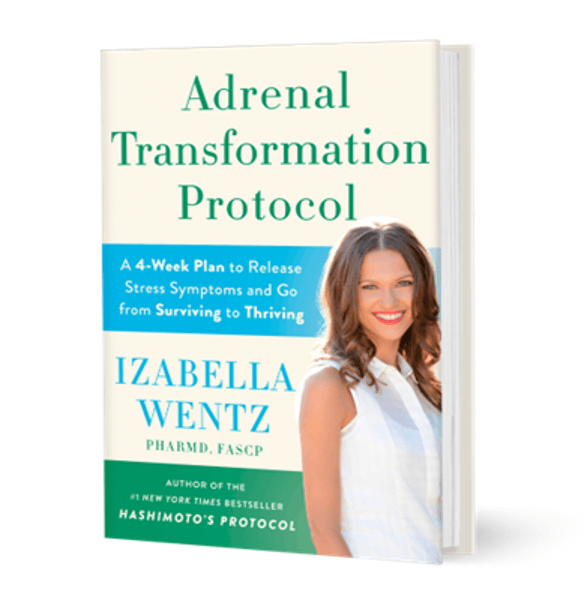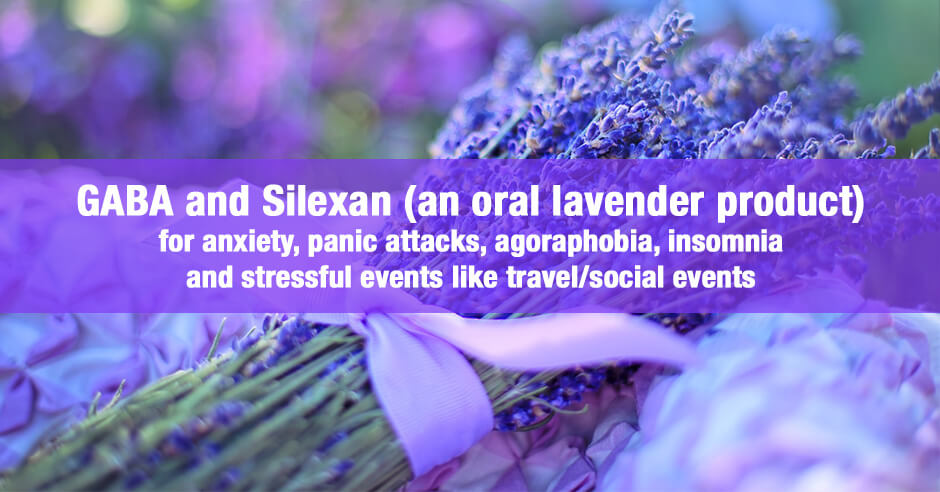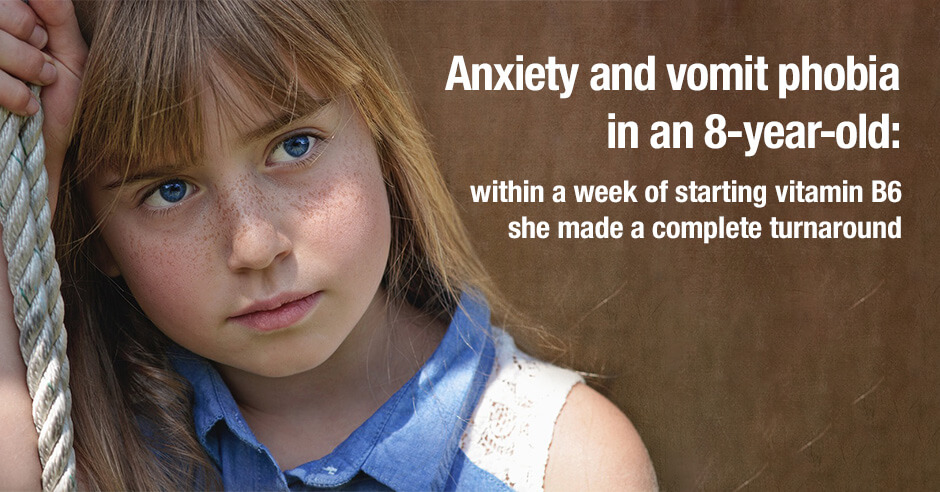
Debbie, a mom in the community, shared this wonderful feedback about how vitamin B6 helped her daughter with terrible anxiety and a phobia of vomit:
My youngest (who is 8 now) started exhibiting terrible anxiety about a year ago, specifically around the phobia of vomit. Her anxiety is mostly about other people throwing up. But her anxiety became so strong it was preventing her from going to school or even staying in her classroom, kept her from eating (because her anxiety hurt her tummy) and even from wanting to do extracurricular activities that she previously loved but now was afraid to attend in case a child might throw up there.
We started her on weekly therapy sessions, and I started her on GABA and tryptophan. While the amino acids helped a little, it wasn’t enough to calm the thoughts that plagued her all day at school and home. Most days I still couldn’t get her out of the car for school.
Through your website and some other research, I decided to try supplementing her with vitamin B6. Within a week of her starting B6 she made a complete turnaround. The anxiety would still come when a kid at school would say their tummy hurt, but she was able to calm herself down within minutes and talk through the worry.
We still have some low days (especially if we haven’t taken her supplements in a few days) but overall, she’s a new kid. Even the school asked what we are doing differently to get her to be calm again.
It’s wonderful to hear that within a week of starting vitamin B6 she made a complete turnaround.
This blog addresses some of the possible mechanisms (possible serotonin and GABA support, and addressing pyroluria), how much vitamin B6 she had her daughter use and optimal dosing, plus other factors like a good multi or B complex.
Some of the possible causes and mechanisms: serotonin and/or GABA support
According to the Child Mind Institute, “Emetophobia, or the severe fear of vomiting or seeing others vomit, is surprisingly common. Kids who already tend to be anxious are more likely to develop it. It leads to fear of things they associate with vomiting. Often it starts with avoiding places where they (or someone else) threw up, or places that remind them of it.”
They discuss therapy and medications as solutions whereas I am discussing nutritional solutions that address the root causes. In this case: addressing low vitamin B6 and its impact on serotonin and/or GABA.
This letter, Vitamin B6: A new approach to lowering anxiety, and depression?, published in 2022, mention a few studies concluding that vitamin B6 supplements “significantly reduce feelings of stress, anxiety, and depression.” It does this via an impact on serotonin and GABA production and this results in the calming of the nervous system.
This 2022 paper, High-dose Vitamin B6 supplementation reduces anxiety and strengthens visual surround suppression, also discusses a GABA mechanism: vitamin B6 supplementation “increases inhibitory GABAergic neural influences, which is consistent with its known role in the synthesis of GABA.” (100 mg/day of vitamin B6 was used by the adult participants)
In this blog post you can read about the role of low vitamin B6 and iron in low serotonin, leading to anxiety and panic attacks.
How much vitamin B6 to use and is pyroluria a factor?
Debbie was not sure how much vitamin B6 to give her daughter:
The struggle I still have is knowing how much to dose her. There’s conflicting info out there as to how much is too much for kids. Right now I’m giving her Carlson liquid B6. I give her between 2-3 drops, which, if I’m doing the math correctly, is about 4-6 mg. She seems to be doing alright on that as long as we don’t miss a day. When we do miss, her anxiety becomes immediately irrational again. If you have any insight on dosing, please let me know. Thanks for all you do!
I shared this feedback with her: With phobia of vomiting I immediately think of the social anxiety condition pyroluria and the additional need for zinc, vitamin B6 and evening primrose oil.
This supports the fact that vitamin B6 helps her daughter and that missed days and increased stress means the anxiety returns.
With kids anxiety can often show up as tummy issues and nausea. And “emetophobics are particularly vulnerable to somatic symptoms, especially gastrointestinal symptoms such as nausea. Nausea, as an anxiety symptom, may be misinterpreted as an imminent episode of vomiting causing further symptoms in a vicious circle.” (from this paper about an 8 year old boy with emetophobia)
Debbie mentions her daughter gets a sore tummy when anxious. If she also feels nauseous on her bad days, that would be another clue to consider pyroluria. A common symptom is morning nausea and addressing pyroluria helps kids who experience this and also helps prevent vomiting. The nutrients for pyroluria are also key for neurotransmitter production (as mentioned above).
I shared that I’ve used 10 – 25mg of vitamin B6 in children this age who have pyroluria (plus the other pyroluria supplements and stress reduction).
Good dream recall with no nightmares is a good gauge of vitamin B6 status and a clue that enough is being used and easy enough to ask children and/or observe nightmares.
There are not many papers on the use of vitamin B6 in children. This study, Use of Nutritional Supplements Based on L-Theanine and Vitamin B6 in Children with Tourette Syndrome, with Anxiety Disorders: A Pilot Study used 2.8mg of vitamin B6 but they were also using theanine.
Supportive solutions: a child’s multi with B vitamins and other underlying factors
When an individual B vitamin like vitamin B6 is used, it’s always advised to use a B complex or a good multivitamin that contains all the B vitamins with sufficient amounts. For children I like a product like Klaire Labs Vitaspectrum ® Powder. This product may actually provide enough vitamin B6 in a situation like this – 1 scoop provides 15 mg of vitamin B6 – or it could be used with extra vitamin B6.
It goes without saying that all dietary and other nutritional factors, gut health, blood sugar handling, sleep, toxins, infections etc. may need to be addressed too.
I would also want to do further exploration into why vitamin B6 may be low, other than pyroluria – such as dysbiosis, inflammation, malabsorption, autoimmunity, low dietary intake, leaky gut, high sugar intake, gluten sensitivity or celiac disease and alcohol use disorder (in adults).
Why didn’t GABA or tryptophan help?
Debbie is well versed in amino acids, having used GABA for her PCOS (polycystic ovarian syndrome). It helped ease her lifelong anxiety, wean off anxiety medication, ovulate each month and stop her PCOS meds. She helped her older daughter with GABA too – she calls them her “happy pills.” And Debbie used tryptophan with success when collagen caused her to have panic attacks again. You can read her story on this blog.
I can’t be sure why GABA or tryptophan didn’t help her younger daughter. It’s where I would have started too, but we are all unique and what works for Debbie and her older daughter just didn’t work for her younger daughter.
It’s possible that a higher dose of GABA or tryptophan may have worked better, or other GABA or tryptophan products, or theanine or 5-HTP or inositol may have been an option.
It’s wonderful that vitamin B6 did work and I appreciate Debbie for sharing and allowing me to share as a blog. I love that the school also asked what they are doing differently to get her daughter to be calm again.
Additional resources when you are new to using amino acids or the pyroluria nutrients as supplements
We use the symptoms questionnaire to figure out if low GABA or low serotonin or low endorphins or low dopamine or low blood sugar may be an issue with vomit phobia.
If you suspect low levels of any of the neurotransmitters and do not yet have my book, The Antianxiety Food Solution – How the Foods You Eat Can Help You Calm Your Anxious Mind, Improve Your Mood, and End Cravings, I highly recommend getting it and reading it before jumping in and using amino acids on your own so you are knowledgeable. And be sure to share it with the practitioner/health team you or your loved one is working with.
There is an entire chapter on the amino acids and they are discussed throughout the book in the sections on gut health, gluten, blood sugar control, sugar cravings, anxiety and mood issues.
As mentioned above, I would start with GABA and tryptophan (like Debbie did) and then start looking for other approaches that may help.
There is also an entire chapter on pyroluria where vitamin B6, zinc and evening primrose oil is addressed in detail.
The book doesn’t include product names (per the publisher’s request) so this blog, The Antianxiety Food Solution Amino Acid and Pyroluria Supplements, lists the amino acids that I use with my individual clients and those in my group programs. You can find them all in my online store.
This includes the products mentioned in this blog: Carlson 100mg B6 and Klaire Labs Vitaspectrum® Powder.
If, after reading this blog and my book, you don’t feel comfortable figuring things out on your own (i.e. doing the symptoms questionnaire and respective amino acids trials), a good place to get help is the GABA QuickStart Program (if you have low GABA symptoms too). This is a paid online/virtual group program where you get my guidance and community support.
If you are a practitioner, join us in The Balancing Neurotransmitters: the Fundamentals program. This is also a paid online/virtual program with an opportunity to interact with me and other practitioners who are also using the amino acids.
Does any of this resonate with you?
If yes, has vitamin B6 helped your child (or you) with anxiety and vomit phobia?
And is pyroluria also a factor that is being addressed?
Have either tryptophan or GABA or Klaire Labs Vitaspectrum® Powder helped too (alone or in conjunction with vitamin B6)?
Feel free to share and ask your questions below.
